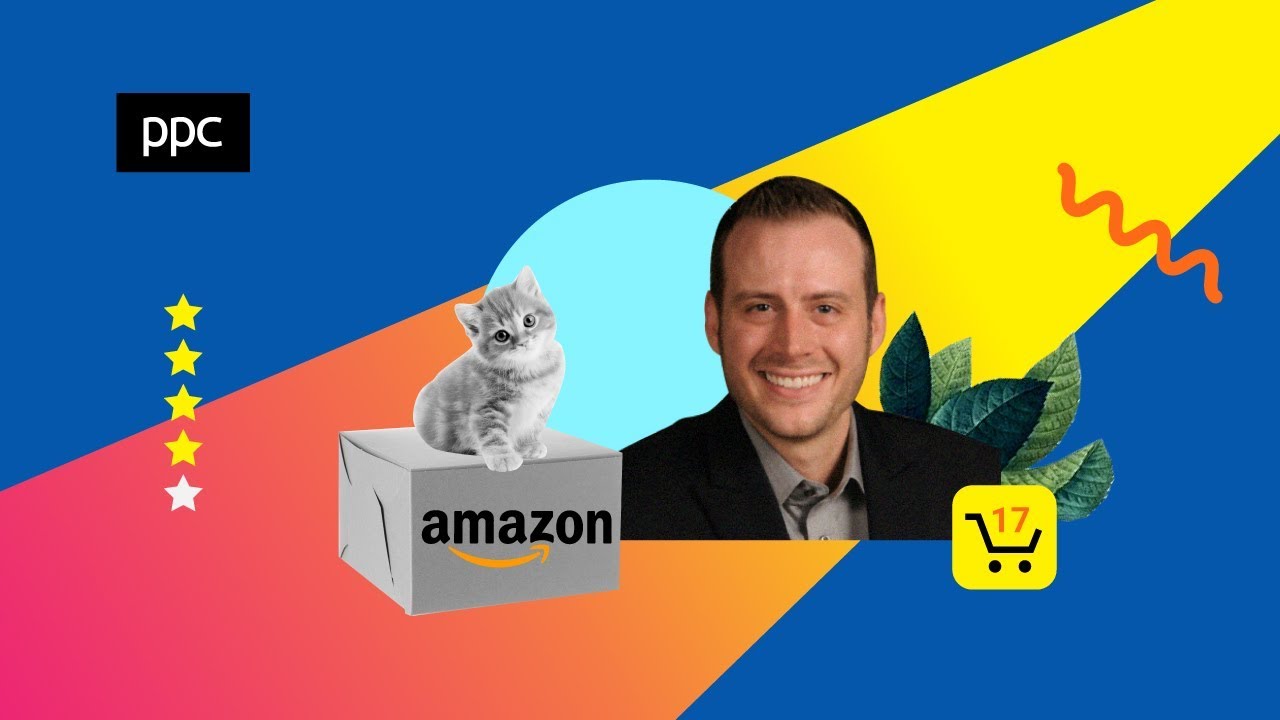
Hey, everyone. Thanks for joining me today. I am Evan Facinger, and we are going to talk about Amazon Advertising, and specifically, how we can actually get our products on Amazon to rank higher organically using the advertising platform.
Now, the Amazon advertising platform is very exciting. It is the third largest; it is only behind Google and Facebook. And you combine that with the fact that the shoppers on Amazon, they are there, ready to buy, ready to make a purchase, and that it has actually surpassed Google for product searches — it is a great opportunity for paid advertising professionals to dive into the Amazon platform and really take advantage of its capabilities.
The A9 Algorithm
One of the things that Amazon relies on with its product search is the A9 algorithm. That is how it determines what products should rank higher than others. Now, text match relevancy is very important for the A9 algorithm, but it goes well beyond that. Amazon wants to sell products, so when it is analyzing the click-through rates, the conversion rates, and the sales velocity for that product to determine where it could rank.
Now, once you understand that Amazon wants to sell products, you can understand how you can use the advertising platform to really manipulate that aspect and help your product gain in the organic ranking. When using Amazon Advertising to focus on improving your product's ranking organically, the first thing you want to focus on is keywords.
For this video, we are going to mostly assume that you have already optimized your Product Detail pages based on keyword research; this means you have your most profitable keywords in your title, you have them in your featured bullet points, your product description — everything that is going to help you out with text match relevancy. If you haven't already done this, you should definitely start there.
Keyword Research Options
We also recommend always taking advantage of both on and off-Amazon keyword research tools, because this gives you a better overall picture and helps give you more keywords that you can choose from and optimize for — based on the data and based on what you are finding.
For Amazon, you can use free tools like Sonar, where you simply input the keywords you want to find, and then you can have additional outputs that you are going to be able to optimize your products for. For off-Amazon, we definitely recommend SEMrush; this is going to help you actually put in keywords that are going to show what Google has. But keep in mind that Google is going to give you different types of keywords. You are going to want to focus on the actual intent to purchase-type keywords, as opposed to informational gathering ones. So pay attention to the cost-per-click. That data will help you understand how valuable the word is to things like Google Ads.
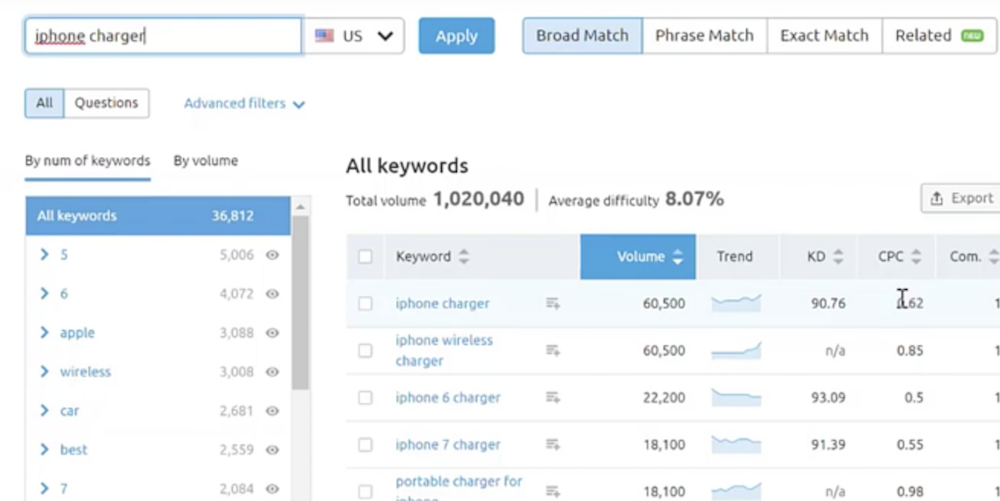
Once you have all of that information together, you are going to have a better look at all the different types of keywords you can choose from. But again, keep in mind, people searching on Amazon do search a little bit differently than they do on Google, so just make sure that you are optimizing accordingly.
Reverse ASIN Lookup
All right, now that you have your listing already optimized, what we are going to want to do next is perform a reverse ASIN lookup on your products. Most Amazon advertisers use the reverse ASIN lookup to spy on their competitors, and you should definitely do that too. But in this scenario, we are going to use it on our own products, because it allows us to get keywords extracted from that Product Detail page.
What is ASIN?
And we are going to want to use these keywords to optimize our paid advertising campaigns to focus on improving our organic keyword ranking. Now to find the ASIN, and by the way, ASIN stands for Amazon Standard Identification Number. It is a unique number that Amazon assigns to every product in their database, and it is how Amazon identifies those millions of different products that are available.
Finding the ASIN
You can find the ASIN by going to the bottom of the Product Detail page. For example, in this case, it is located right here, along with the other product information.
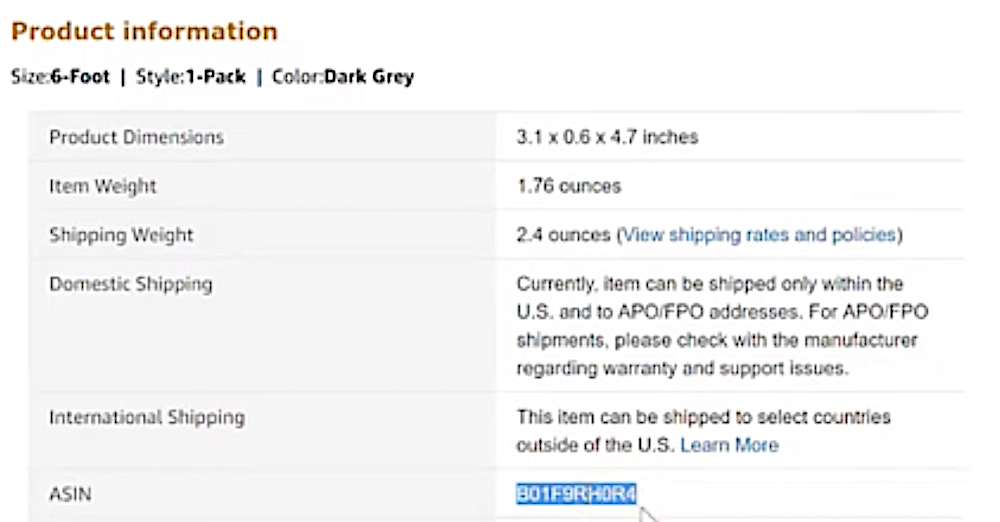
Now some reverse ASIN lookup tools are paid. There are also some free ones. If you are already using a paid software to run your Amazon campaigns, most likely they are going to have reverse ASIN lookup. Otherwise, Sonar does have a reverse ASIN lookup available. You simply paste that ASIN that you copied from the previous page there, hit the Ping button and it is going to give you those list of keywords that are on there, and indexed by Amazon.
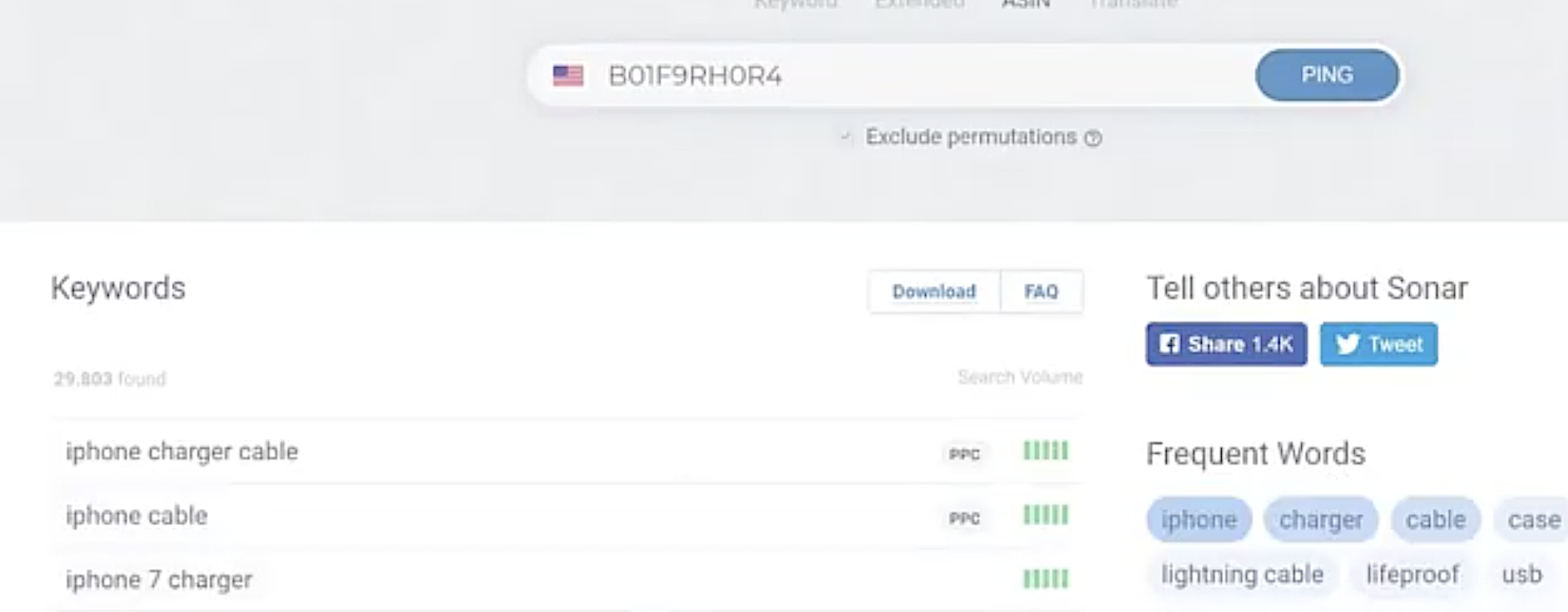
But keep in mind, in my experience, not all of the data around that product keyword being indexed in Amazon is 100% accurate. So if you want to just double check and make sure that your product is indexed by Amazon, what you are going to want to do is actually take that same ASIN number, paste it in the search tab, make sure the All category is checked, and then just type in the keyword that you are verifying.

Once you do that, you are going to have search results, and if that Product Detail page is showing, which it is right here (5:51), you know that Amazon already has you indexed for that keyword.
Sponsored Amazon Ads
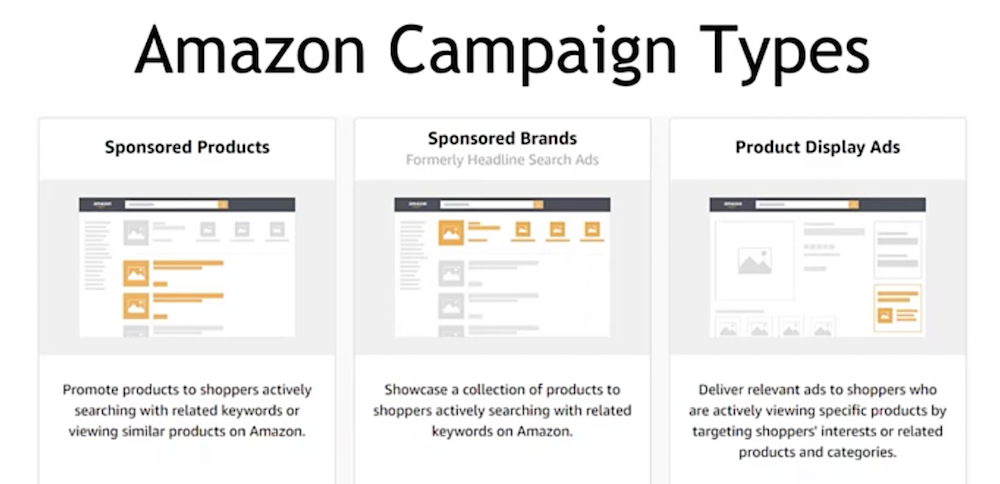
Now that we have a list of our indexed keywords, we want to add them to a spreadsheet for easy access. If you are using software to build and manage your campaigns, you can also put them there instead.
Now, if you haven't already been running sponsored product ads for these keywords, you would want to start. Depending on how your campaigns are structured, you can either add them to an existing ad group or just create a new one. But as a general rule of thumb, we like to use existing campaigns when we can. And that is just because how long a campaign is running, does contribute to the campaign score, but this isn't necessary.
Structure
Now, to help with scalability and performance, I like to structure my sponsored product ads into groups focusing on different initiatives. Keeping branded, competitor and general product category terms all separate, this will give you better insight and also helps your campaigns perform optimally.
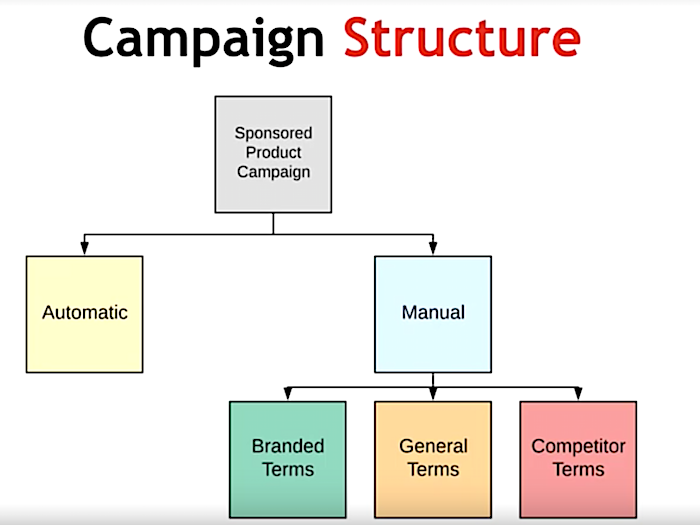
Conversions
If you are already bidding on these terms in Amazon Advertising (7:15), you will want to look at the conversion rates for those words; this is incredibly important for the A9 algorithm. But finding the conversion rate in Amazon Advertising is a little tricky. There isn't just a conversion tab like on the other platforms. The good news here is that we can find the conversion rate by dividing Orders by Clicks.
Low conversion rates here are going to hurt you. The key is to review the conversion rate for the individual keywords, and you can do this by using the table below on your actual advertising campaign, or exporting everything into Excel if that is easier for you. Once you see how much the performance varies for keywords, you are going to see why the structure of your campaign is a critical component of your advertising success.
For branded terms, always have a high conversion with a low ACOS, while competitor terms are generally lower conversions with a higher ACOS.
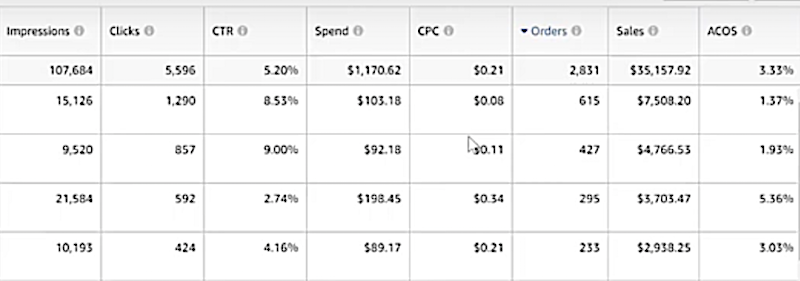
When you combine these terms into one category, it is going to lead to the campaign results showing just an average performance for all of them. That is why we always break them out into those different groups as we outlined before. And understanding the conversion rate for your individual keywords you are going to want to rank for, gives you the starting point to see where additional budgets can go, and where some further optimization may be required.
If your Product Detail page isn't converting at a high rate for people searching for that term compared to the other products, Amazon's not going to want to rank you higher. Remember, the job of advertising is to get the eyeballs on your Product Detail page. It is up to that page to convert that shopper into a sale. So keep in mind, when you are implementing a strategy to gain organic ranking, you can't judge the campaign performance on the reported ACOS alone. Instead, look at the total ASIN sales.

PDA - Product Display Ads
Another really fun strategy to increase your ranking is to target your competitors, specifically the best sellers in that category. You are going to want to pay attention to the search term that you used, as well as that category.
By using a combination of product display ads — which are going to be ads that show directly on that Product Detail page, right below the checkout — as well as sponsor product keyword search, using your competitor terms, and the sponsor product targeting in sponsored product ads, and assuming that you sell a quality product, this onslaught of ads towards your competition helps to improve your sales, while at the same time, reducing the conversion rate of your competitors. Of course, as top competitors start losing sales, they are going to generally strike back with ads of their own, and bump up your bid cost, but you can still have a lot of success with this strategy.
All right, that is all for today. Amazon's a very exciting platform, and it is always changing. So if you have any questions or comments, definitely leave them below, and I will be sure to respond to everything. Have a great day.
Innovative SEO services
SEO is a patience game; no secret there. We`ll work with you to develop a Search strategy focused on producing increased traffic rankings in as early as 3-months.
A proven Allinclusive. SEO services for measuring, executing, and optimizing for Search Engine success. We say what we do and do what we say.
Our company as Semrush Agency Partner has designed a search engine optimization service that is both ethical and result-driven. We use the latest tools, strategies, and trends to help you move up in the search engines for the right keywords to get noticed by the right audience.
Today, you can schedule a Discovery call with us about your company needs.
Source:





